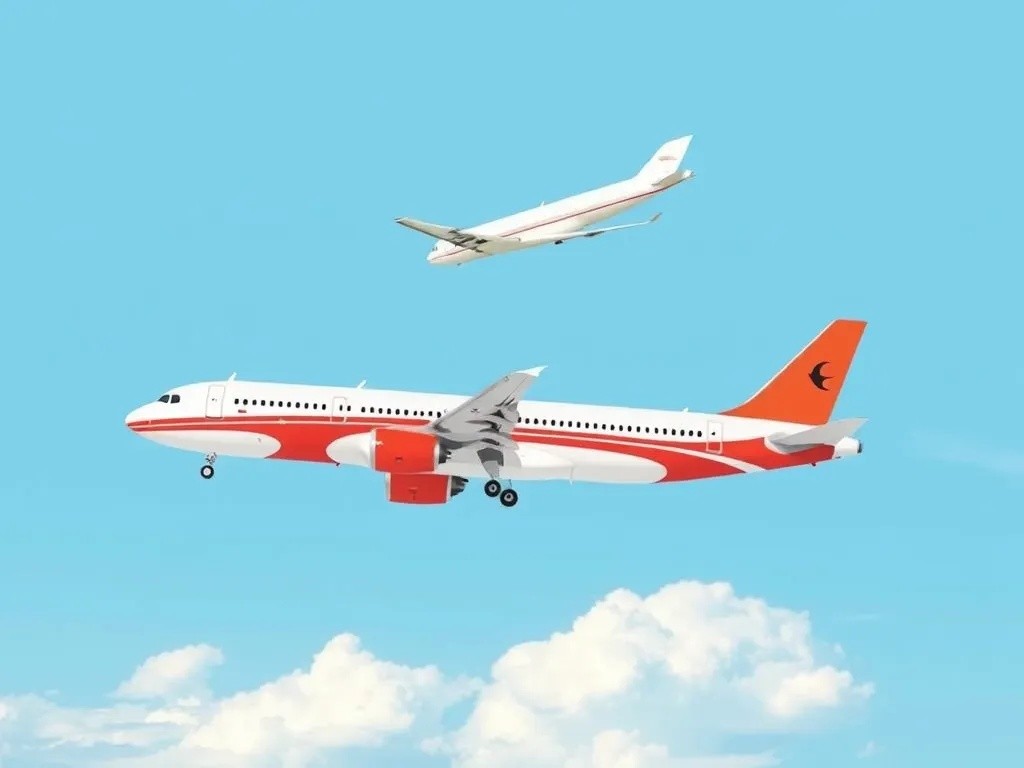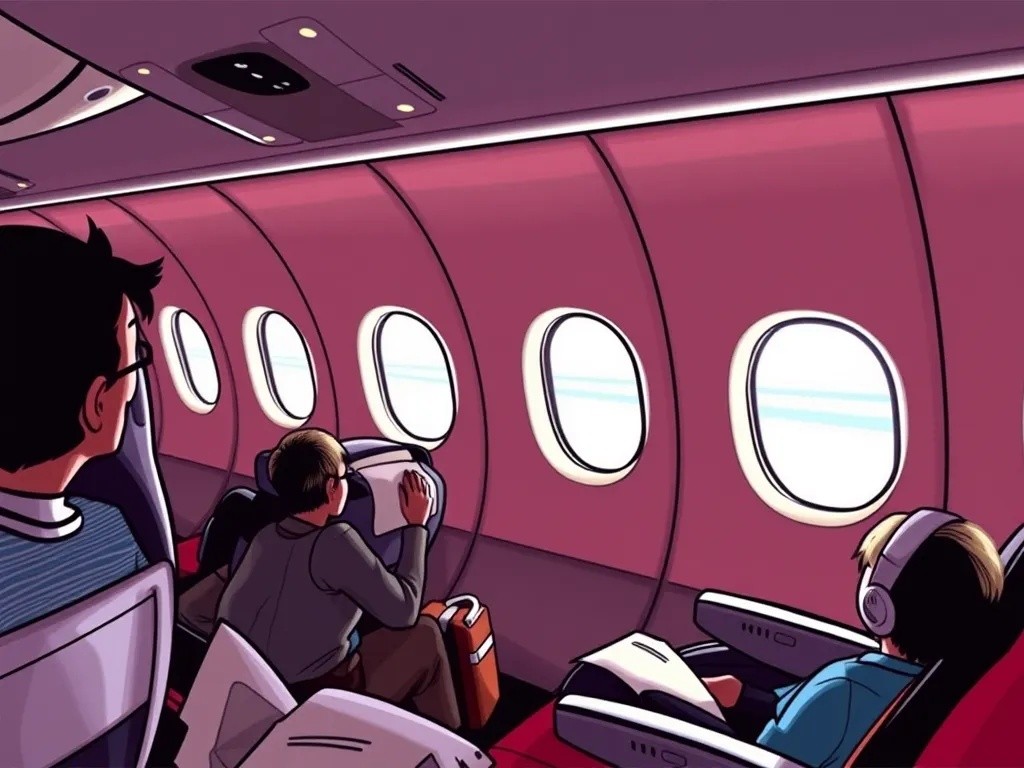Flying can be uncomfortable enough without mysterious airline rules making things worse. While passengers often blame airlines for cramped seats and stale air, many comfort-related issues stem from bizarre regulations that airlines must follow. These rules, ranging from federal mandates to industry standards, create some truly odd situations that directly impact your flying experience.

The Oxygen Conspiracy
One of the most startling revelations about air travel is that airlines deliberately keep cabin oxygen levels lower than what you'd find at sea level. Federal Aviation Administration (FAA) regulations allow cabin pressure to simulate altitudes up to 8,000 feet, meaning oxygen levels can be reduced by up to 25% compared to ground level.
Why This Affects Your Comfort
This oxygen reduction isn't just a technical detail – it has real consequences for passengers. Lower oxygen levels can cause:
- Increased fatigue and drowsiness
- Mild headaches during flight
- Reduced cognitive function
- Heightened effects of alcohol consumption
Airlines maintain these levels because pressurizing the cabin to sea level would require stronger, heavier aircraft structures, significantly increasing fuel costs. The trade-off is passenger comfort for operational efficiency.
The Temperature Tango
Ever wondered why you're freezing while the person next to you is sweating? Airlines follow specific temperature regulations that create uncomfortable situations for many passengers. The FAA requires cabin temperatures to be maintained between 65°F and 75°F, but airlines typically aim for the lower end of this range.
The Cold Truth
Airlines deliberately keep cabins cooler for several weird reasons:
- Cold air prevents passengers from fainting due to low oxygen levels
- Cooler temperatures reduce the risk of airsickness
- Cold environments make passengers less likely to complain about other discomforts
- Lower temperatures help preserve food longer in galley storage
This creates the paradox where airlines provide blankets as an amenity while simultaneously making them necessary for basic comfort.
Bizarre Bathroom Regulations
Airplane bathrooms are governed by some of the strangest rules in aviation. The FAA mandates specific ratios of lavatories to passengers, but these calculations often result in insufficient facilities for comfortable use.
The Numbers Game
For aircraft with 61-180 seats, airlines only need to provide three lavatories. This means on a full flight with 180 passengers, you're sharing bathroom facilities with 60 other people. The rule gets even weirder: airlines can reduce the number of lavatories if they install "accessible" facilities, even if most passengers can't use them efficiently.
Water Restrictions
Perhaps most bizarrely, airlines are required to test their water systems regularly, but the standards are surprisingly low. The water used for coffee, tea, and hand washing often comes from tanks that are only cleaned every few months. This has led many flight attendants to privately advise passengers to stick to bottled water.

The Seat Recline Paradox
Airlines must follow specific safety regulations about seat design, but these rules create the infamous "recline wars" that plague modern air travel. Seats must be able to return to their upright position within a certain timeframe during emergencies, but there's no regulation about how far they can recline into another passenger's space.
The Pitch Problem
Seat pitch (the distance between seats) regulations are minimal, allowing airlines to pack passengers increasingly tightly. The FAA only requires that passengers be able to evacuate within 90 seconds, leading to seats being placed as close as physically possible while still meeting this standard.
Food and Beverage Oddities
Airlines follow peculiar rules about food service that directly impact passenger comfort and satisfaction. For instance, salt and pepper must be pre-packaged rather than provided in shakers due to turbulence concerns, but this makes food taste bland and unsatisfying.
The Ice Cube Controversy
Airlines are required to use potable water for ice, but the definition of "potable" is surprisingly loose. The same water tanks used for bathroom facilities often supply ice machines, leading to potential contamination issues that many passengers never consider.
Meal Timing Mysteries
Flight attendants must complete meal service before certain phases of flight, leading to rushed service or meals being served at uncomfortable times. This regulation prioritizes safety over passenger dining comfort, often resulting in meals being served immediately after takeoff or well before landing.
The Luggage Limitations
Carry-on restrictions go beyond simple size requirements and venture into truly weird territory. Airlines must enforce regulations about lithium batteries, but the rules are so complex that even flight attendants sometimes misunderstand them.
The Power Bank Paradox
Passengers can carry power banks in their carry-on luggage but not in checked bags, yet many travelers don't know this rule. When power banks are discovered during security screening, they must be removed from checked luggage, often causing delays and confusion.

Sound and Light Regulations
Airlines must maintain specific lighting levels during different phases of flight, but these requirements often conflict with passenger comfort. During takeoff and landing, cabin lights must be dimmed to help passengers' eyes adjust to potential emergency conditions, but this creates an uncomfortable environment for reading or working.
The Noise Factor
Engine noise regulations focus on external noise pollution rather than passenger comfort, meaning airlines have little incentive to minimize cabin noise. The result is a constant drone that contributes to passenger fatigue and stress.
Conclusion
Understanding these weird airline rules helps explain why flying can be so uncomfortable. While many regulations exist for valid safety reasons, the cumulative effect creates an environment where passenger comfort is often sacrificed for compliance, efficiency, or cost savings. Next time you're uncomfortable on a flight, remember that it might not be entirely the airline's fault – they're following a complex web of regulations that often prioritize everything except passenger comfort.
The aviation industry continues to evolve, and hopefully, future regulations will better balance safety requirements with passenger well-being. Until then, knowing these rules can help you better prepare for and understand your flying experience.
